Our first passage in the Pacific was 80nm from Panama City to the small island of Contadora in the Las Perles island group. The day dawned clear and sunny with a beautiful blue sky and flat water. Unfortunately, these conditions were accompanied by no wind. This meant we had to motor the whole way. Leaving the city behind, we motored towards Las Perlas, passing the large tankers on their way into the Canal and watching in awe as the flocks of pelicans played ‘follow the leader’.
After the hustle of Panama City, it was lovely to spend a couple of days anchored off the quiet beach at Contadora. We joined our fellow rally participants to enjoy leisurely strolls around the island, some snorkelling in the crystal clear waters and, of course, a meal and a beer with a sea view. Our time on the island was rounded off with a beach prize giving and a sing along accompanied by various musicians from the fleet. There is something special about talking and laughing with friends, the sand between your toes and the starry sky above.
Leg 3 was from Contadora to Galapagos, a distance of about 850nm which would take between 6 and 8 days. The start was set for 1200 on Wednesday 22nd March 2023, however the forecast was predicting very little wind and a possible motoring distance of 800nm! This was not an ideal situation for us as we only carry 500 litres of diesel – not enough to motor the whole way. Deciding to make the most of what little wind there was, we set off 18 hours earlier than the fleet. It was strange lifting the anchor as the sun set, leaving the other boats to enjoy their last evening in Panama, as we sailed off into the distance.
The early start was certainly a bonus for us. With winds of 10 -15 knots, we set the sails goosewing and were able to sail at 6 knots for about two and a half days. By this time, the wind had dropped to Force 2 (4-6 knots). However, we still managed to motor sail for the next three days. Finally, the forecasted “no wind” hit us. After almost 6 days on passage, it dropped to Force 1 (1-3 knots) and then it was time for the engine to do the work!
As with most of our passages, on this journey we spent many hours with no sight of land or other vessels. At times like this, it would have been easy to become complacent and assume that we were all alone on the ocean. But we cannot do this, we always have someone on watch, day and night. Whilst on watch, we are monitoring the chart plotter, wind gauges, AIS and we regularly scan the horizon by eye. You never know what might be out there. On this passage, we had to avoid large cargo ships while crossing the busy shipping lanes and there was also a small island to watch for as our direct route took us straight through the middle of it!
As usual, we also kept our eyes open for wildlife. On this trip we were joined by a small finch like bird. He seemed completely unafraid of us and spent several hours perched on the pedestal in the cockpit.
Other boats on the fleet were not so lucky with their visitors. Several were invaded by flocks of 6/7 large boobies. Whilst this may sound amazing, they are very messy birds and their visits resulted in a lot of cleaning up when they eventually left. The daily SSB net was full of humorous stories of boats trying to find ways to keep the birds from landing in the first place. The rest of the fleet were keen to share their thoughts and our favourite suggested strategies were playing loud music (Tina Turner’s ‘Simply the Breast’ being one) and sending the crew around the boat banging pots and pans.
The fishing line went out daily, but the only thing that we caught was someone else’s very long fishing line attached to two buoys! On the positive side, Martin got to practise his free diving techniques untangling the line from around the sonar heads.
Our travels since leaving the UK have presented us with many ‘firsts’. This passage marked our first time across the equator. It was exciting to see the position report move from reading north to south.
There are many traditions linked to this momentous event when newbie sailors move from being shellbacks to becoming pollywogs. The ARC boats celebrated in many ways. Some had champagne and nibbles, whereas others were ‘visited’ by King Neptune himself to perform the initiation. On Escapade, the crossing was marked with a tot of rum for us and one as a ‘thank you’ to Neptune. We also had a quick swim for our photo for the rally competition.
The variety of knowledge and skills of the people on the ARC is vast and on this passage we were treated to a celestial star gazing talk. The wind was light and the sky was clear; a perfect evening for planetarium worker Troy to point out the key stars, planets and constellations.
Once we were approaching the Galapagos Islands, it was time to carry out our final checks to be ready for arrival. We ate up the remaining fresh food, checked that the rubbish bins were clearly labelled and Martin went for a quick snorkel to give the hull another clean.
Finally, having travelled almost 1000nm in just under 8 days, we arrived in Wreck Bay, San Cristobal in the famous Galapagos Islands.



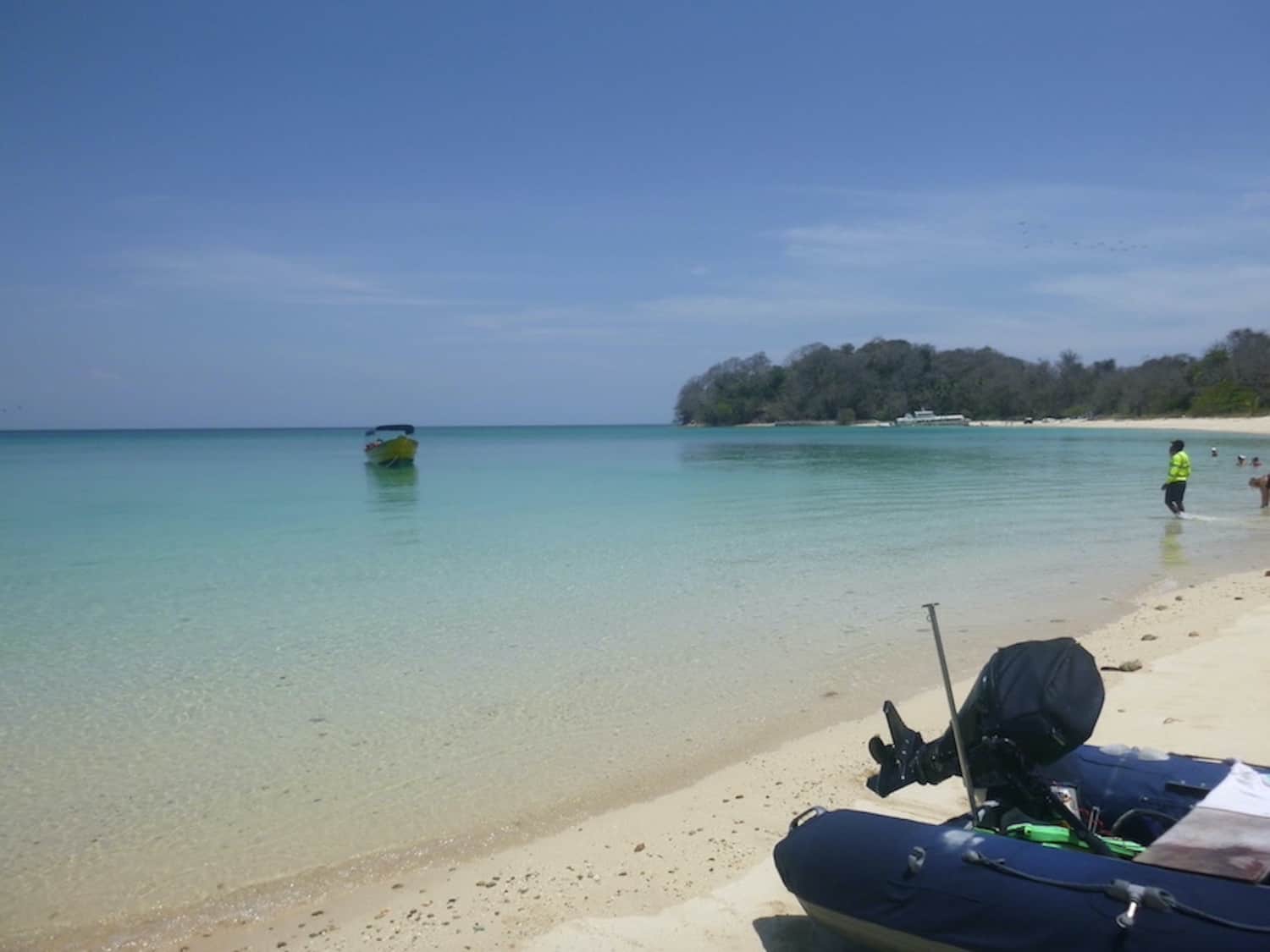

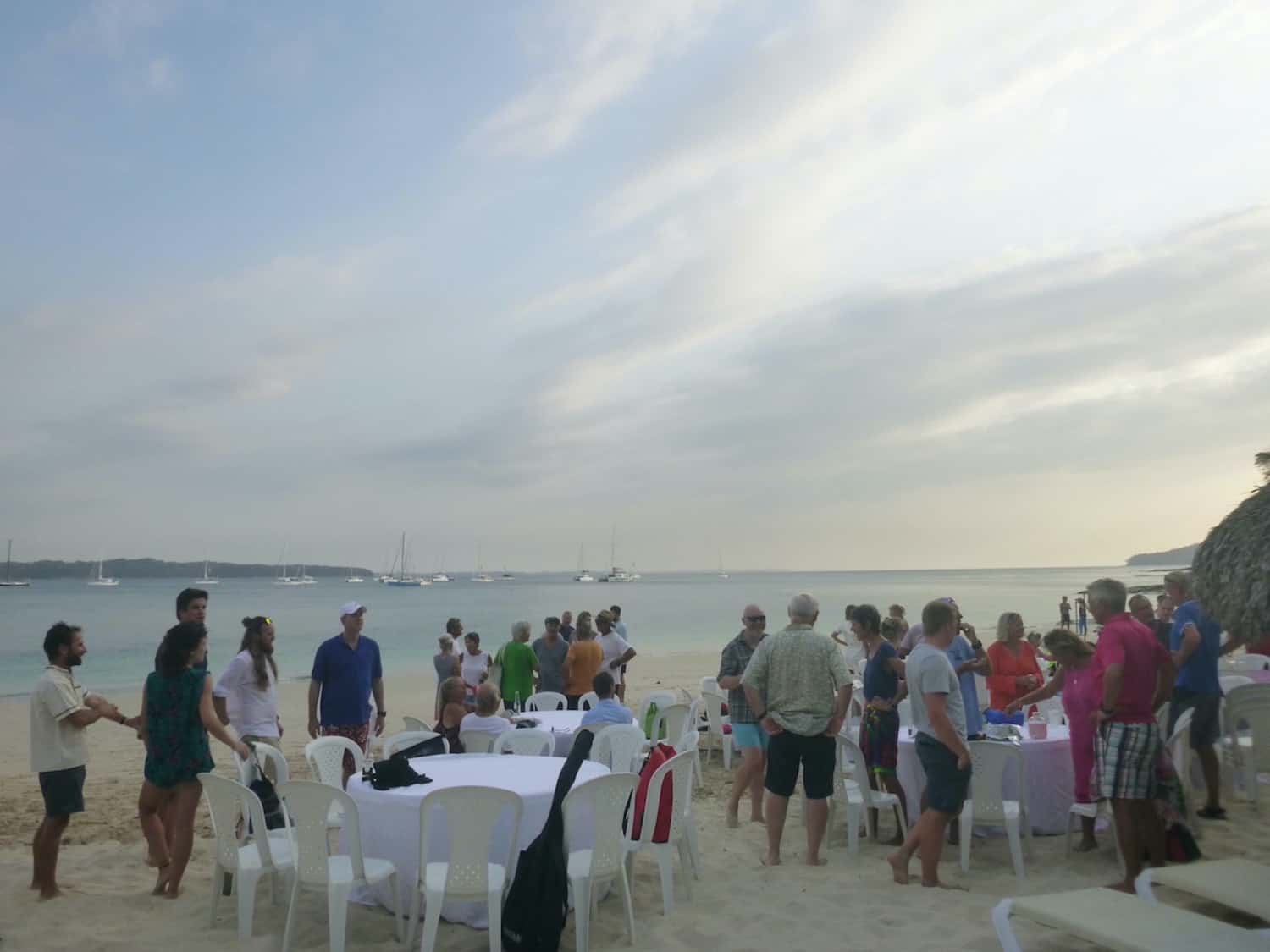
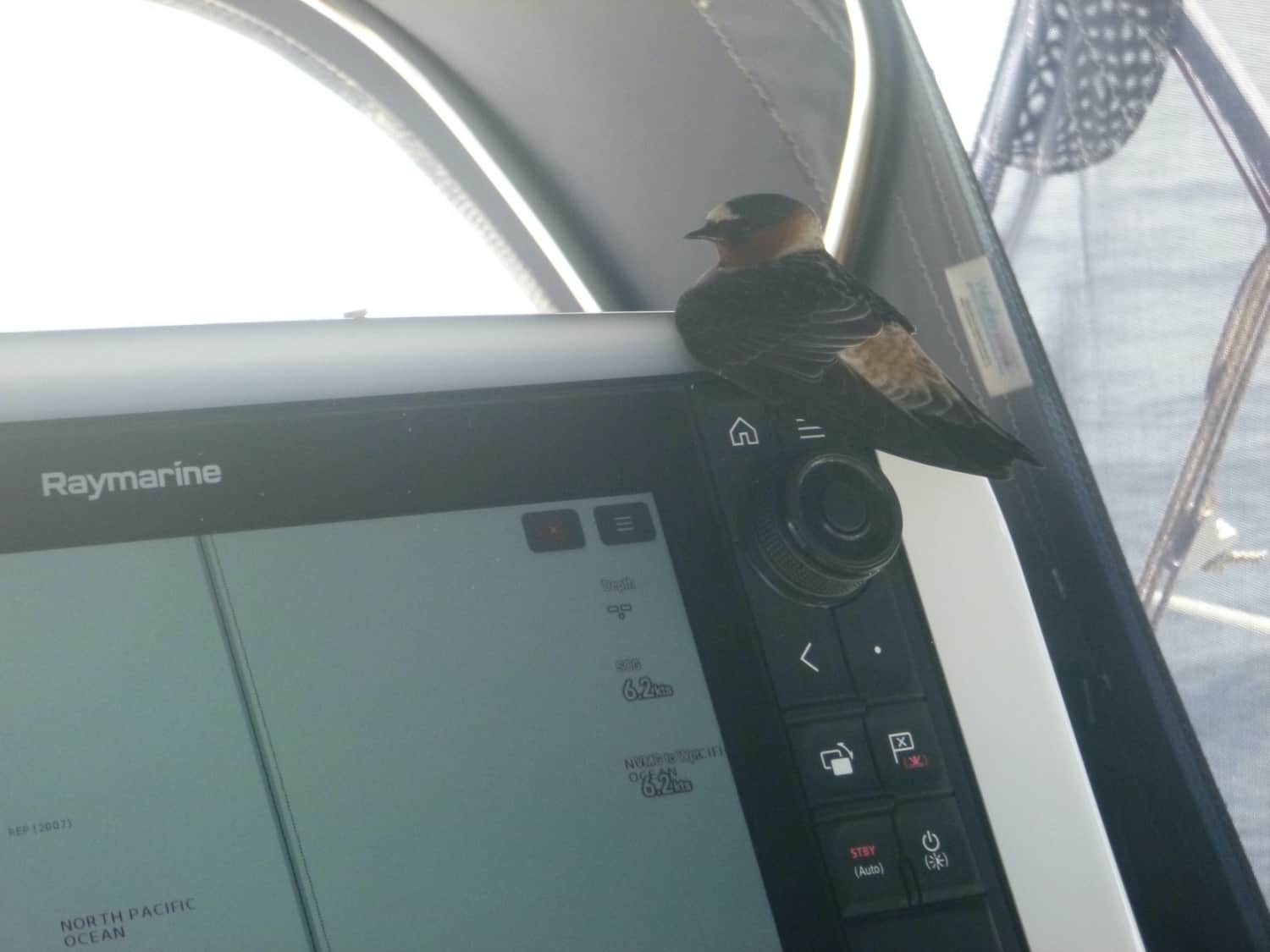
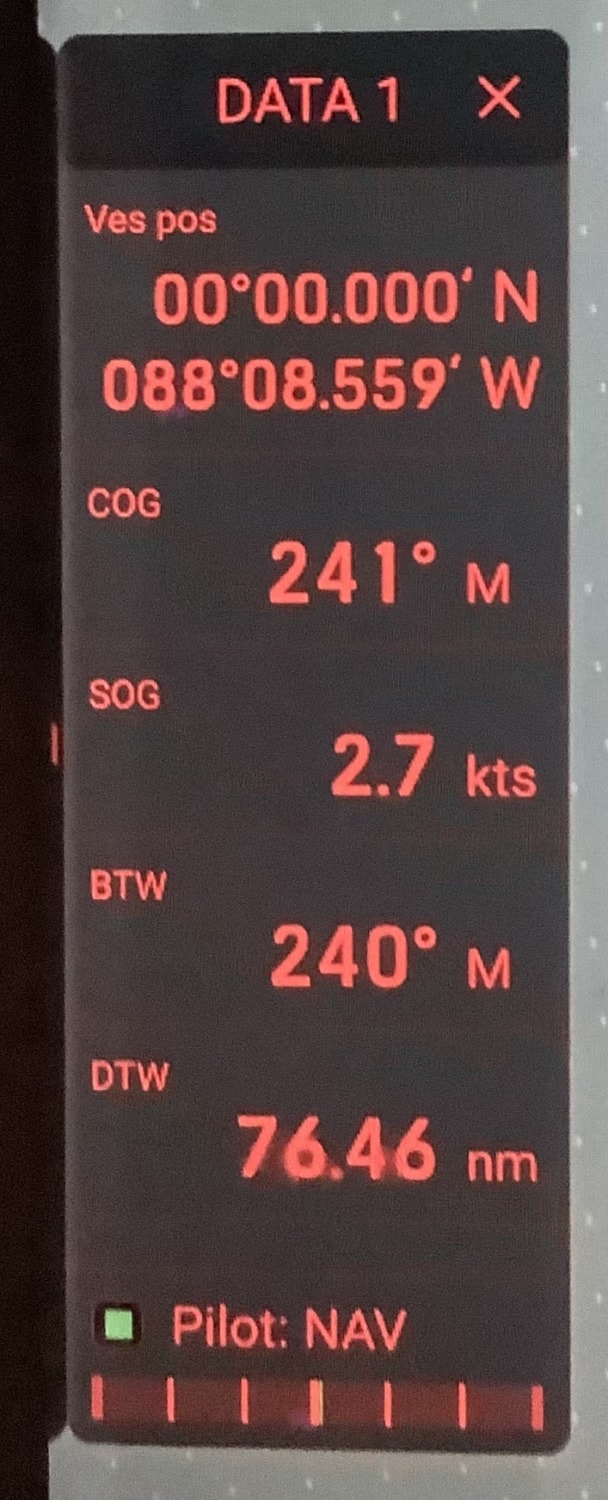


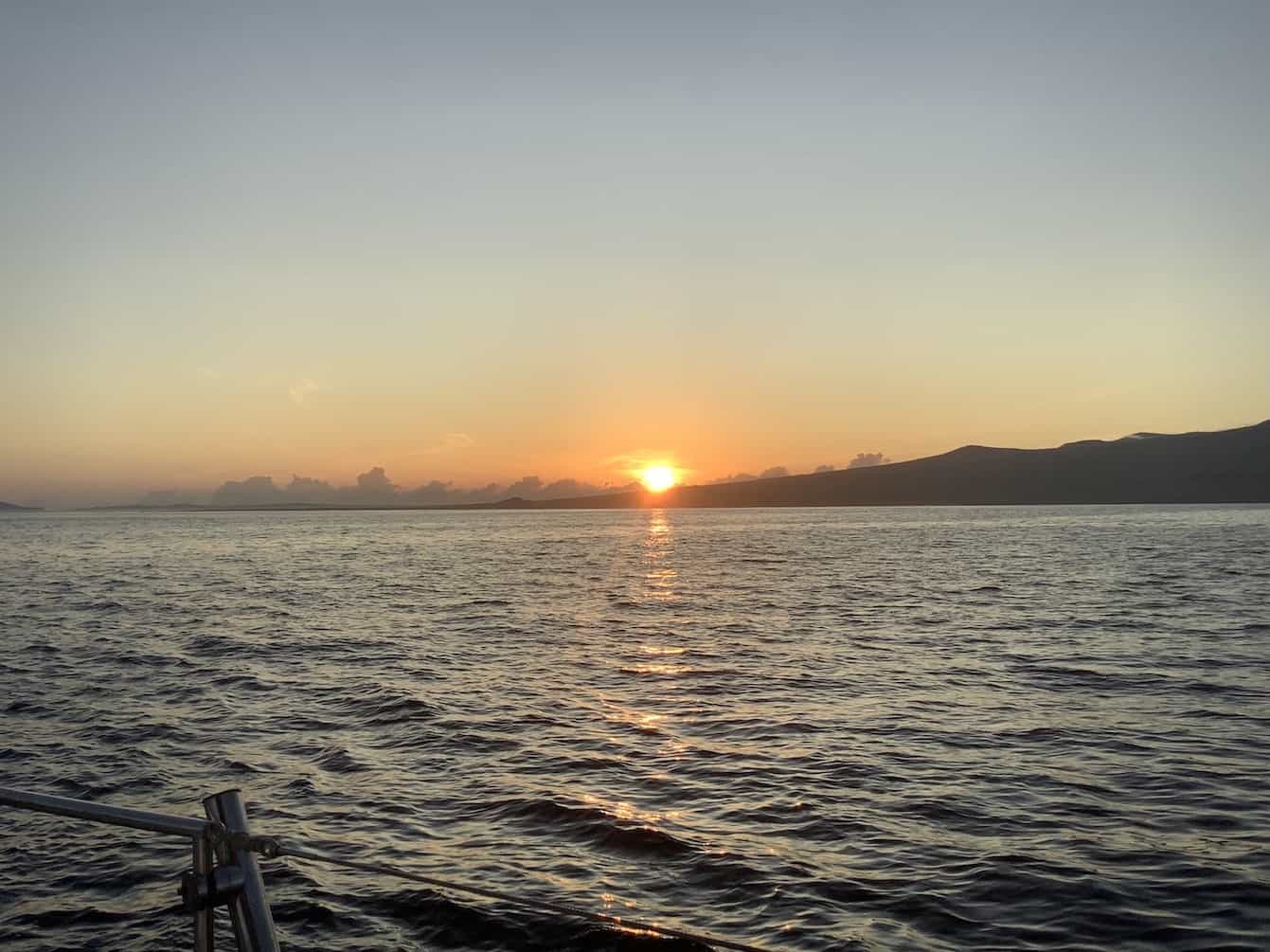
Congratulations on a successful voyage to the Galapagos Islands.
Many thanks. Next leg to Marquesas was even longer!
Wow, a finch from the Galapagos as your navigator xxx how very lovely
Glad it’s all still so very exciting. Loving the updates both.
Hi,
Great to hear from you. Hope all is well with you all.
Pleased that you are liking the updates. Next post Galapagos…but need internet as there is a longish video!
X
You really are adventurous and can absolutely call yourself fully fledged sailors- the equator and the rum and all. 🤣
I’m in England right now- mid summer but cold and wet.
Hi,
We have been following your adventures on Facebook. The cruise looked great…so many interesting places.
Not surprised about the weather in England. Sounds like a typical summer!
X
checked your location the other day … not far away from us now! Stay safe xxx
Hi,
Should arrive Mackay around 20th September. Plan to be your way end of October/start of November.
See you soon
Xx